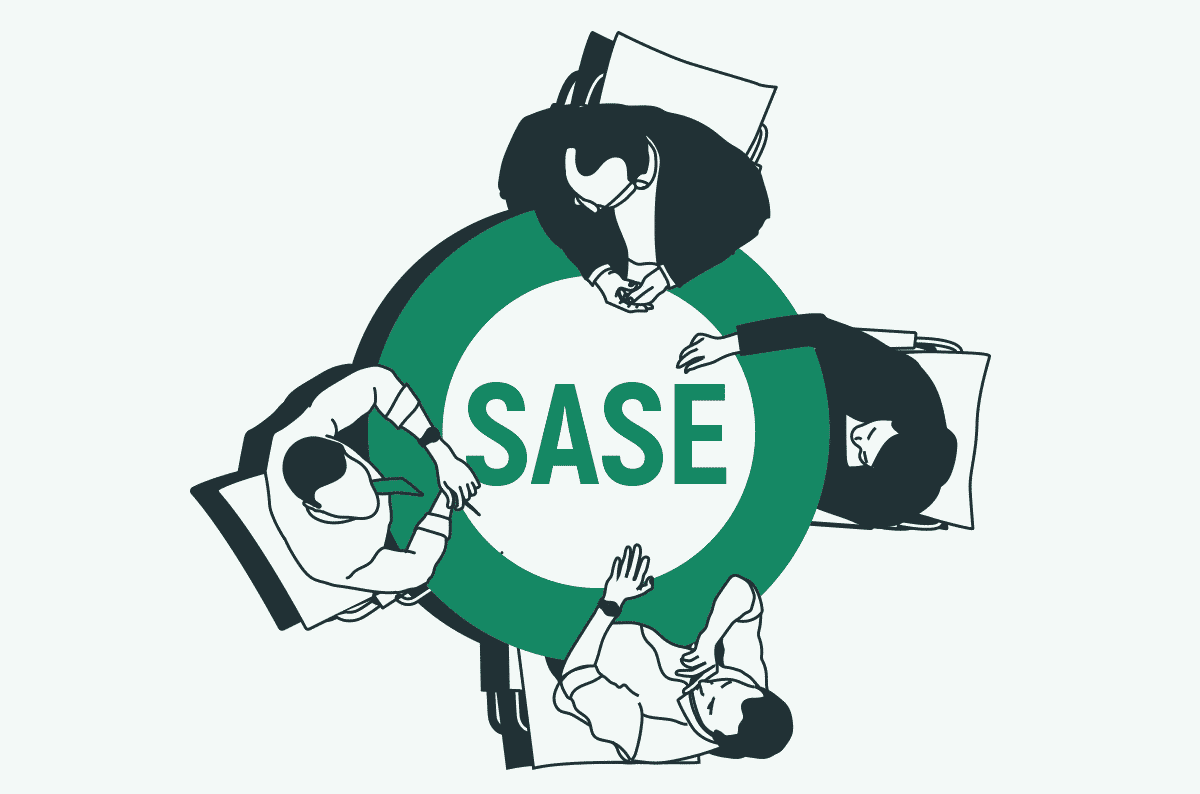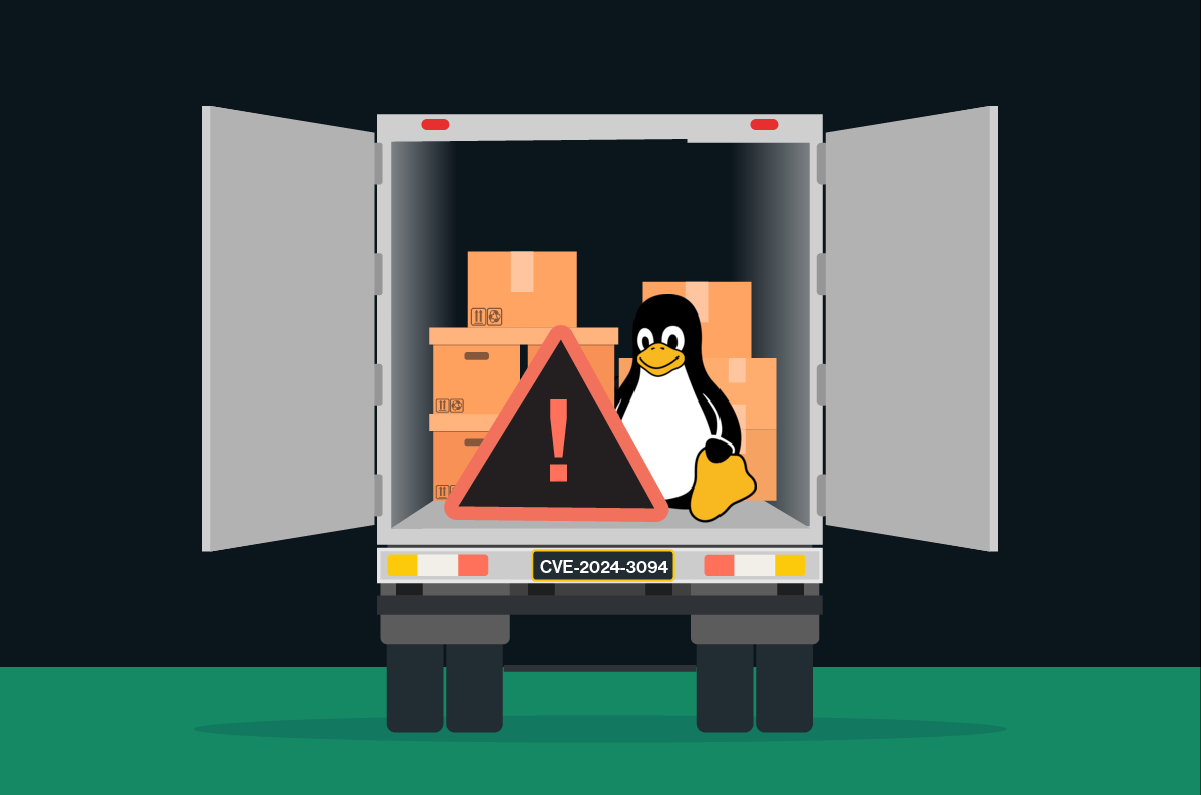Talking SASE to Your Board: A CIO’s Guide to Getting to ‘Yes’

Table of Contents
- 1. Introduction: Discussing Transformation with the Board
- 2. How to Position Network Transformation to the Board
- 3. A Conversational Guide to Engaging the Board on SASE
- 4. Highlight the Strategic Value of SASE
- 5. Present the Risk-mitigation Value of SASE
- 6. Discuss SASE as a Financial Performance Enabler
- 7. A SASE Engagement Model Allows for CIO-Board Partnership
|
Listen to post:
Getting your Trinity Audio player ready...
|
Introduction: Discussing Transformation with the Board
Technology is a strategic requirement for every global organization and its board of directors, regardless of industry. No one is immune from the machinations of technological evolution and the associated disruption that follows. As a result, we can no longer separate business strategy from technology strategy, forcing corporate boards to converge their decision-making processes around a strategic agenda of innovation and risk-mitigation. So, CIOs must take an innovative approach when discussing any transformational change with the board.
How to Position Network Transformation to the Board
Network transformation is a game-changing strategy that helps drive business growth and market acquisition. So, if not positioned effectively to address board-level concerns, it will impact the long-term ability to execute and advance business objectives. When addressing the board, CIOs must position such technology strategies with critical board-level concerns in mind and discuss them in the context of:
- Can this strategy help us improve IT responsiveness and ability to support business growth?
- What value will the business realize through this initiative?
- What is the security impact of this strategy on our critical applications?
- How would this strategy enable IT organizations to better mitigate increasing security risk?
- What would be the short- and long-term financial impact of this initiative?
- What is the impact of our current and next-gen IT talent?
Core to discussing these strategies is articulating the necessity of simplification, optimization, and risk-mitigation in delivering business outcomes through network transformation. And this is where Secure Access Service Edge (SASE) becomes that strategic conversation for board-level engagement.
Your First 100 Days as CIO: 5 Steps to Success | EBOOKSASE is the network transformation strategy that addresses board-level concerns around risk, growth, and financial flexibility. SASE converges networking and security capabilities into a single high-performing cloud-native architecture that allows organizations to scale core business operations through efficiency and performance, while extending consistency in policy and protections. So, presenting a SASE strategy to the board requires CIOs to be crisp and clear when highlighting key business benefits.

A Conversational Guide to Engaging the Board on SASE
In February 2019, Deloitte defined a 3-dimension conversation model for CIOs when engaging technology boards. This engagement model defines the thought processes of board members when evaluating technology initiatives for sustaining business growth and maximizing balance sheets.

To influence the board’s decision-making process, CIOs can lean on this model to guide their discussion of SASE’s positive impact on business growth and sustainability. While SASE may not speak specifically to each sub-dimension of the Deloitte model, the core focus on Strategy, Risk and Financial Performance can be adapted as a conversation guide when discussing SASE and Network Transformation.
Highlight the Strategic Value of SASE
Disruptive technology drives business growth and market share acquisition. However, CIOs should emphasize SASE not as a disruptive technology, rather as a disruptive approach to existing technologies. When positioning SASE to boards, CIOs should emphasize the strategic potential of SASE’s disruptive approach to simplifying network operations, which by extension, accelerates business growth.
CIOs must articulate the strategic business benefits of converging networking and security functions into a single cloud-native software stack with unlimited scalability to support business growth. An obvious benefit is how SASE accelerates and optimizes access to critical applications, enhancing the collection, analysis, and securing of data, while improving user experiences and efficiency. Another benefit is how SASE eliminates scaling challenges when more capacity is required to service business growth and expansion.
An imperative for CIOs is to highlight use cases where SASE proves its strategic value across the entire enterprise. Successful SASE implementations makes it easier to pursue Cloud Migration, Work-From-Home (WFH), UCaaS, and Global Expansion projects, just to name a few. Through these, we observe how SASE not only eliminates networking and security headaches, but it also streamlines the efforts of IT teams, allowing them to place more focus on these strategic initiatives. SASE has now become that true platform for digital transformation and an enabler of business growth.
In short, CIOs must emphasize how SASE enables the network to scale at the speed of business, instead of the business being limited by the rigid, inflexibility of the network. This approach allows CIOs to demonstrate SASE’s strategic value to the overall business by removing technical challenges that limit growth.
Conversation Tips
- SASE as a disruptive approach to simplifying network operations
- SASE as a “Growth Enabler” – optimized access improves business operations
- Unlimited scalability at the speed of business

Present the Risk-mitigation Value of SASE
No one is immune to cyber risk, and boards will naturally question cyber readiness for critical projects that support business growth. Typically, discussions around risk are fragmented along network support for new initiatives, and security risk to data and privacy. This overlooks the obvious linkage between the two, but SASE allows CIOs to blend these conversations to address critical board-level concerns.
Considering this, presenting the risk-mitigation value of SASE requires CIOs to address a key imperative of most boards – SASE must help overcome increased complexity and mitigate cyber risks today and well into the future.
Years of acquiring point products to solve point problems have bloated technology environments, resulting in security blind spots, increased complexity, and unmanageable risk. SASE proves its risk mitigation value by simplifying protection schemes, increasing visibility, improving threat detection and response, unifying security policies, and facilitating easier auditing. CIOs must also emphasize SASE’s simplistic Zero-Trust access approach to critical applications, delivering consistent policy enforcement across the entire network.
Finally, CIO’s must outline how SASE enable organizations to meet regulatory and compliance mandates and policies. This conversational approach re-enforces SASE’s risk-mitigation value and alleviates one of the biggest board-level concerns – the risk of ransomware and business disruption.
Conversation Tips
- Highlight cyber risks without SASE –complexity, blind spots, and reputation loss
- Risk Mitigation value – holistic data protection schemes
- True SASE is a platform that enables compliance mandates

Discuss SASE as a Financial Performance Enabler
Boards are laser-focused on the long-term financial performance goals of the business. The board needs to understand how network transformation will improve their balance sheets and customer retention. While many CIOs hesitate to link technology investments to financial performance metrics, articulating the positive impact of SASE on financial performance can position it as an ROI-enabler.
In our whitepaper, “ROI of Doing Nothing”, we highlight the long-term financial impact of delaying network transformation with SASE. Becoming a Stage 1 company – transition early to anticipate challenges vs. being a Stage 2 company – delay results in increased requirements and subsequent costs, comes down to the overall financial burden organizations are prepared to withstand. CIOs must promote the positive ROI of SASE in securing the long-term financial structure of the business.
When evaluating the feasibility of network transformation with SASE, CIOs must speak to the business and talent efficiencies to be gained. Today, most enterprises exhaust considerable resources running and maintaining inefficient infrastructures. This often produces outages across the network, which impacts operations across the entire business. The financial impact of this is not only measured in maintenance contracts and renewal/upgrade fees, but also in application availability, performance, and scalability.
SASE reduces costs by retiring expensive and inefficient systems, and this also directly impacts their IT talent performance. Similar to the strategic value, less time spent on mundane technical support activities enables IT teams to direct their support efforts towards strategic, revenue-generating initiatives. This increases revenue generated per-head, thus improving the operational cost model.
Highlighting key performance metrics related to revenue and ROI will gain broad consensus for SASE projects. Mapping key performance requirements into business ROI gained via SASE, demonstrates how it not only transforms networking and security, but also overall IT and business operations that impact the bottom-line.
Conversation Tips
- SASE as an ROI enabler – lower TCO
- Delaying SASE – impacts long-term cost structures
- IT support for revenue-generating initiatives

A SASE Engagement Model Allows for CIO-Board Partnership
Justifying network transformation can be challenging considering it requires a paradigm shift towards a new way of viewing IT operations and its impact on the broader business. By following a simple board-level engagement model focusing on Strategy, Risk and Performance, CIOs can build a more compelling discussion on the numerous advantages in SASE that extend far beyond simple network and security efficiencies. It is important to develop that CIO-Board partnership that explores these through a business outcome lens. SASE pursued with strategic business enablement in mind alleviates the key board-level concerns, while empowering CIOs to deliver the resilient, cost-effective converged platform that enables optimal IT operations, mitigates risk, and produces long-term ROI.
Engaging the board on new technology approaches such as SASE does not have to be scary. SASE provides a new way to envision the Digital Infrastructure of the Future, and highlighting the main concerns of most board members, is the most direct approach to discuss this topic. This writing provides a simple guide for mapping board-level concerns to the intrinsic advantages of SASE, while providing a roadmap to realizing the key benefits.
To learn more about how CIO’s succeed in this digital era, download our “First 100 Days as a CIO” guide.















